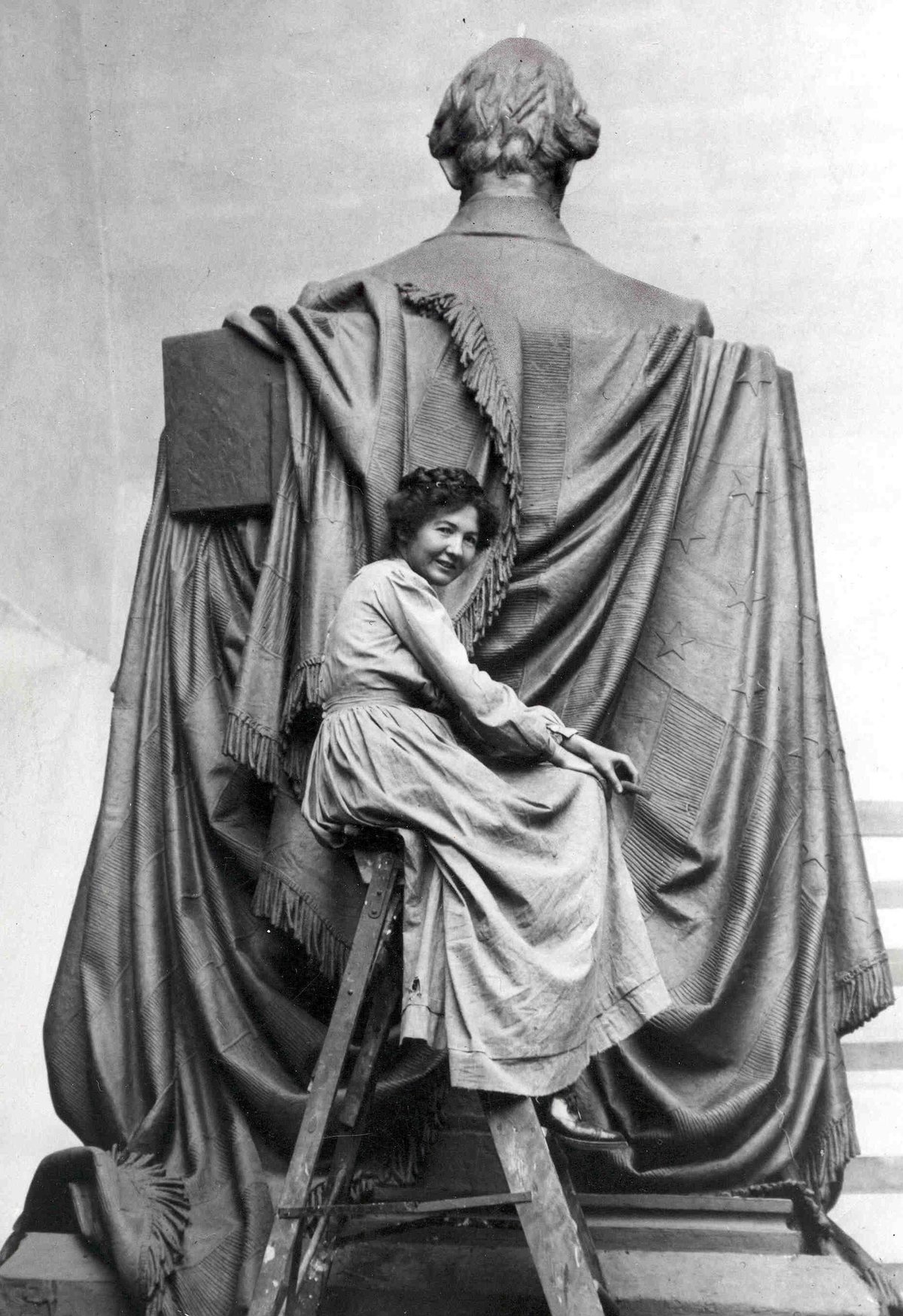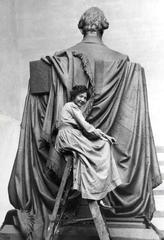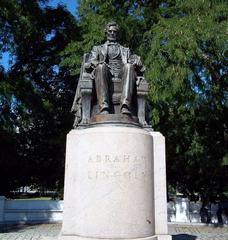
Abraham Lincoln Monument Chicago: Visiting Hours, Tickets, and Travel Guide
Date: 14/06/2025
Introduction
Visiting “Abraham Lincoln: The Head of State” in Chicago is a memorable journey into American history and public art. This monumental bronze statue—crafted by the renowned sculptor Augustus Saint-Gaudens and set within an elegantly designed exedra by architect Stanford White—honors the 16th President of the United States. Situated in Chicago’s Grant Park, the statue invites reflection on Lincoln’s leadership and legacy. With its central location, accessibility, and proximity to other cultural sites, the monument is a must-see for history enthusiasts and tourists alike (Wikiwand; Chicago Monuments Project).
This guide provides everything you need to know for a rewarding visit: the monument’s history, artistic significance, hours, ticketing, accessibility, travel tips, nearby attractions, and more.
Table of Contents
- Introduction
- Historical Background
- Visitor Information
- Visuals and Media
- Timeline of Key Events
- Frequently Asked Questions (FAQ)
- Conclusion and Call to Action
- References
Historical Background
Origins and Commissioning
The vision for “Abraham Lincoln: The Head of State” began with John Crerar, a Chicago industrialist who, in his 1889 will, left $100,000 (about $3.5 million today) to fund a monumental Lincoln statue in Chicago. In 1897, Augustus Saint-Gaudens, regarded as one of America’s foremost sculptors, was commissioned to realize this dream. Crerar’s bequest and the city’s civic pride combined to ensure Lincoln’s legacy would be honored through public art (Wikiwand).
Artistic Vision and Design
Having already achieved acclaim for his “Standing Lincoln” in Lincoln Park, Saint-Gaudens envisioned this new work as a deeper exploration of Lincoln’s inner life. The 9-foot bronze statue depicts Lincoln seated, his posture and expression conveying introspection and the immense burden of leadership at the end of the Civil War. The statue rests on a granite pedestal and is framed by a sweeping 150-foot white marble exedra designed by Stanford White, creating an environment that encourages both public gathering and private contemplation (Chicago Monuments Project).
Challenges and Delays
The project faced significant hurdles. In 1904, a fire in Saint-Gaudens’ studio destroyed the original models and drawings. Despite the loss, the work was completed by his studio after his death in 1907. Legal challenges over the statue’s placement further delayed installation—most notably, Aaron Montgomery Ward’s court battles to keep Grant Park “forever open, clear, and free” of buildings, which forced the relocation of the original proposed site (Wikiwand).
Temporary Displays and Final Placement
During the years of indecision, the completed statue was exhibited at the Metropolitan Museum of Art in New York (1908–1913) and at the 1915 San Francisco World’s Fair. It was finally installed in Grant Park, north of Van Buren Street and east of the Illinois Central railroad tracks, and unveiled on May 31, 1926—almost four decades after Crerar’s bequest (Wikiwand).
Artistic Legacy and Symbolism
Saint-Gaudens’ seated Lincoln is notable for its emotional depth and psychological realism. Unlike the heroic standing figure in Lincoln Park, this statue emphasizes Lincoln’s solitude and the moral complexity of his presidency. The exedra, a classical architectural form, not only frames the monument but invites visitors to pause and reflect, underscoring themes of democracy and civic engagement. The statue’s likeness was notably used for the 1909 postage stamp commemorating Lincoln’s centenary (Chicago Monuments Project; Wikiwand).
Role in Chicago’s Urban Fabric
“Abraham Lincoln: The Head of State” is a key element of Grant Park—often called Chicago’s “Front Yard.” Originally intended as part of the “Court of Presidents,” the monument now stands alone as a testament to the city’s civic values. Its placement near major cultural landmarks makes it accessible and integral to Chicago’s historical and cultural landscape (Chicago Public Art; Choose Chicago).
Visitor Information
Visiting Hours and Admission
- Hours: Open daily from dawn to dusk; Grant Park is generally open from 6:00 AM to 11:00 PM.
- Admission: Free; no tickets or reservations required.
Accessibility
- The monument and surrounding exedra are wheelchair accessible, with paved pathways and bench seating.
- The site is suitable for visitors with mobility needs.
Travel Tips
- Location: Grant Park, near the intersection of Michigan Avenue and Van Buren Street.
- Public Transit: Easily accessible via CTA bus and “L” train routes (Adams/Wabash and Jackson stations).
- Parking: Limited nearby; public transit or rideshare is recommended.
Nearby Attractions
- Millennium Park (Cloud Gate)
- The Art Institute of Chicago
- Buckingham Fountain
- The Field Museum (a short walk south)
Special Events and Guided Tours
- Guided walking tours of Grant Park often feature the Lincoln monument.
- Commemorative events are occasionally held for Lincoln’s birthday and Presidents’ Day.
- Contact local tour operators or the Chicago Park District for current schedules (Chicago Park District).
Visuals and Media
Alt text: Bronze statue of Abraham Lincoln seated in Grant Park, Chicago
For a virtual experience, access the Chicago Monuments Project’s online tour.
Timeline of Key Events
- 1889: John Crerar’s bequest for a Lincoln statue
- 1897: Augustus Saint-Gaudens commissioned
- 1904: Fire destroys original models
- 1907: Saint-Gaudens dies; his studio completes the work
- 1908: Statue exhibited at the Metropolitan Museum of Art
- 1915: Displayed at the San Francisco World’s Fair
- 1924: Grant Park site approved
- 1926: Statue unveiled in Grant Park (Wikiwand)
Frequently Asked Questions (FAQ)
Q: What are the visiting hours for the Abraham Lincoln monument?
A: Grant Park is open from 6:00 AM to 11:00 PM; the monument is accessible during these hours.
Q: Is there an admission fee?
A: No, visiting the monument is free.
Q: Is the monument wheelchair accessible?
A: Yes, the area is fully accessible.
Q: Are guided tours available?
A: Yes, check with local tour providers or the Chicago Park District for schedules.
Q: What are the best nearby attractions?
A: Millennium Park, the Art Institute of Chicago, Buckingham Fountain, and the Field Museum.
Conclusion and Call to Action
“Abraham Lincoln: The Head of State” is a vital Chicago landmark—blending artistic excellence with profound historical resonance. Its free, year-round access and central location make it ideal for visitors seeking insight into American history and public art. Pair your visit with nearby attractions for a comprehensive Chicago experience.
To enrich your tour, download the Audiala app for guided audio tours, interactive maps, and updated visitor information. Stay informed on special events by following official channels and connect with Chicago’s vibrant cultural community.
Plan your visit today to experience this iconic monument—a place where the legacy of Abraham Lincoln and the spirit of Chicago converge.






























































































































































